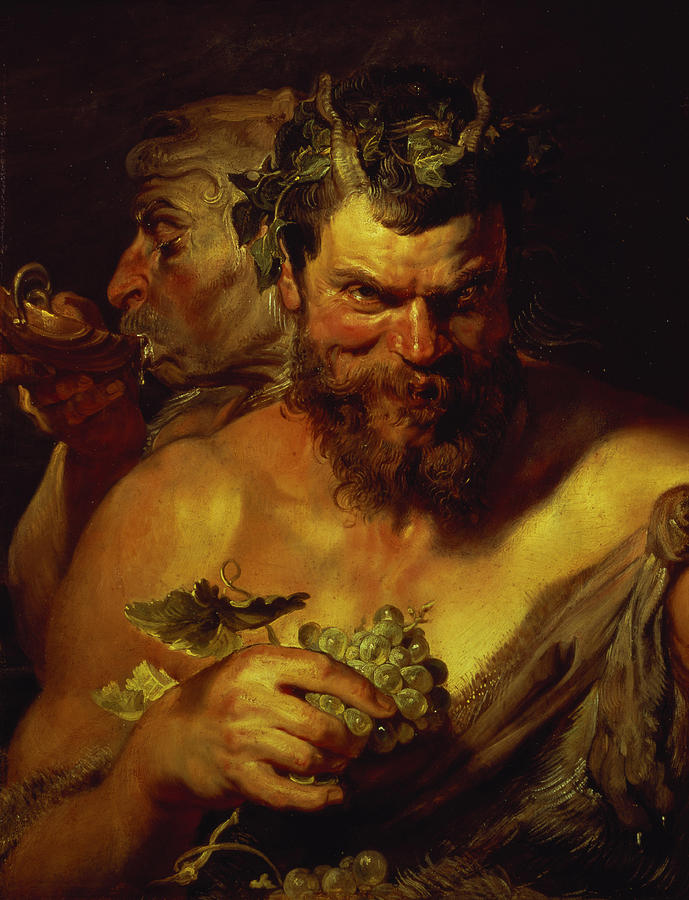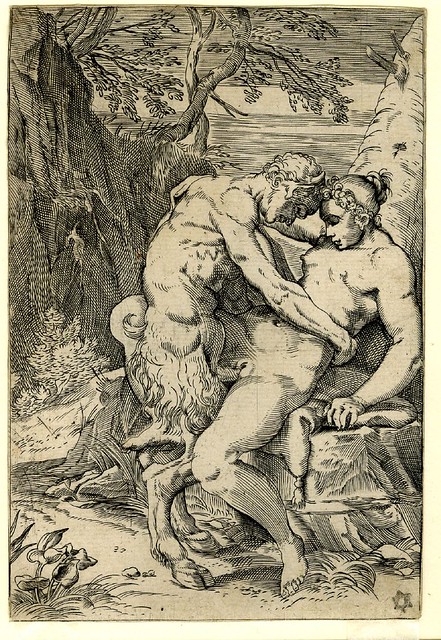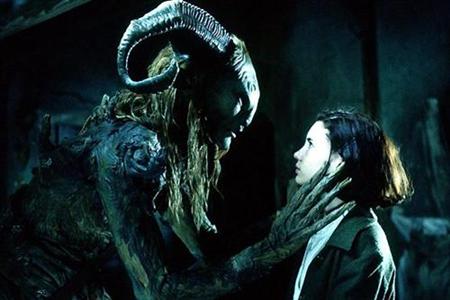 |
| Witches Sabbat, Francisco de Goya 1789 |
There are a few gods in mythology who stand the test of time, evolving to better suit the developing world. Long ago, in the old age of Greece people accepted that the world was wondrous and abounding, vast with mysterious creatures, gods. Many such as the Unicorn, the Dragon and the Phoenix have remained divine in the minds eye. Fewer creatures such as Nymphs, Centaurs and Manticores survive in Bestiary's, on pages only revealed to the few who seek them out. These figures were once revered and honored as creations of the gods, but time has played many tricks upon them transforming them simply into parable.
 |
| Two Satyrs, Peter Paul Rubens (1557-1640) |
Legend tells a time where man and these figures coexisted, habituating and sharing experiences both spiritually and physically. They explored the world dangerous and innocent. Darkness and light shared a relationship, kin to each-other and revered equally. Nymphs, traditionally female in spirit and anatomy, weaved through the woods representing Mother Earth naked and emotional, baring the greatest power outside of time, the power of creation. Centaurs and Satyrs, horned gods who were powerful in physique and strength, represented men, beasts by nature. Nymphs, an early form of faerie were divinely stitched to the night, as the moon is both mysterious and emotional, white goddesses. The beasts were related to the Sun, warm and intense with the strength to shape the season, devils and daemons before their definitions became unchaste.
 |
| Gustave Doré, Paradise Lost |
Many religions and spiritual traditions honored the beast as half of the balance to our existence. Pagan cultures that were established well after ancient Greece carried the tradition of gods as archetypes and adopted them into their heritage, paying tribute to the divinity within men and women as a unit.
 |
| Engraving by Agostino Carracci, Italy, 1585-1600 |
The Satyr and Horned gods of the wood sealed to their brother the goat were eventually demonized by a witch-crazed world and chased out into obscurity by 'Christianity'. The horned god was transformed into Satan, the 'Devil', a figure no longer revered but feared. The Nymphs tied to Mother Earth, the goddess, Archetype of Sexuality eventually were sealed into dark churches as a new archetype, a 'Holy Virgin'. This was the metaphorical death of the unicorn, the true loss of innocence and separation, as the beast in man and the sexuality of the woman is the union necessary for creation. Many inquisitors during the dark European and American witch trials obsessed with the notion of what they called 'Sexual Union with the Devil', accusing girls as young as eight years old with this act. They were challenging, forcing fear and manipulation into an old world view of unity and creation.
 |
| Tarot, Rider-Waite-Smith 1910 |
The old world of Greece recognized a goat-god akin to the Satyrs, beast children of Dionysus the lord of fierce joy, his name was Pan. He was a Shepard, tending to the beasts of the forest and chasing his companions the Nymphs. He is most traditionally described as having the hind quarters and horns of a goat. He is considered the god of Nature, Flocks, Sheep, Shepherds and Mountain Wilds. He is almost always associated with sexuality.
"He was certainly not without the lustful propensities of his kind. He was said to have lain with everyone of Dionysus' maenads during their wild celebrations, and he fathered children on several of the retiring nymphs who guarded trees and mountain pools." --- The Enchanted World, Magical Beasts
.jpg) |
| The Magic of Pan's Flute, John Reinhard Weguelin 1905 |
The traditional pipes seen around his neck are fashioned by reeds that were discovered when he was in hot pursuit of a nymph named Syrinx. It is said that she vanished masking herself among the reeds. In turn, the pipes when played are surely the hypnotizing sounds of the Nymphs.
 |
| Pan and Syrinx, Jean-François de Troy, 1722-1724 |
Satyrs are sometimes compared to fawns. Fawns have been explored through many various popular forms of literature, most notably and recently in C.S. Lewis' Chronicles of Narnia. Mr. Tumnus a popular character in the novel: The Lion, the Witch and the Wardrobe is a fawn and the first creature that the heroine Lucy Pevensie meets in the fantastic world called Narnia. He is benevolent and kind. He displays a respectable and reserved nature unlike Pan, although at one point in the story he is compelled to play his pipes to trick the young girl. It is interesting to note that The Lion, the witch and the Wardrobe is often associated to Christianity as a theological parable. The irony here is that the fawn is a mythological creature tied to the very figure that has been transformed into the 'Devil'. C. S. Lewis once stated that the development of his story came from a simple image in his mind of a fawn walking through the snowy wood carrying a parcel and an umbrella.
 |
| Mr. Tumnus meets Lucy, Pauline Baynes 1950 |
The most recent popular appearance of Pan was in the 2006 film titled: Pan's Labyrinth, written and directed by Guillermo del Toro. In this Spanish film, a young girl in Spain during the Spanish Civil War 1944 is led by a fawn deep into a world of enchantment. Much like the Minotaur of Crete, Pan guards an elaborate labyrinth. It is interesting to note that Pan is the first fantastical creature to greet the young girl inspiring her into a a tricky mysterious world.
 |
| Pan & Ofelia, Pan's Labyrinth Warner Brothers Pictures 2006 |
Source Material:
- Greek Mythology
- The Enchanted World, Magical Beasts, Time-Life Books 1985
- Witches; by Erica Jong, illustrated by Joseph A. Smith. New York: Harry A. Abrams 1981
- Wikipedia
- The Lion, the Witch and the Wardrobe, by C.S. Lewis, illustrated by Pauline Baynes. New York, New York: Macmillian Publishing Co. 1950